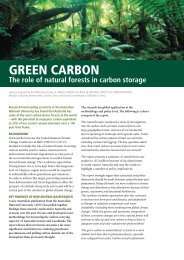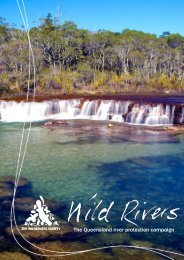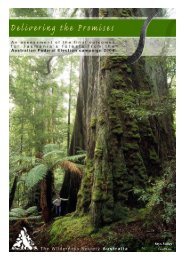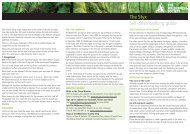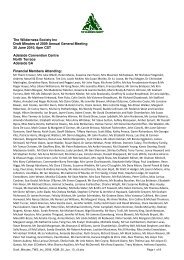Untitled
Untitled
Untitled
- No tags were found...
Create successful ePaper yourself
Turn your PDF publications into a flip-book with our unique Google optimized e-Paper software.
2.0 Conditions leading up to the February fires2.1 Weather2.1.1 OverviewTolhurst (2009) explains that weather elements, such as seasonal conditions (droughts),shorter term episodic events (heatwaves and storms), dynamic situations (extremetemperature combined with low air moisture, strong winds, atmospheric patterns andpassage of low pressure troughs and cold fronts) are critical to fire behaviour.2.1.2 TemperatureSeveral experts in fire behaviour and climatology have noted that the preceding weatherand climate played a significant role in the severity of the fires (Tolhurst 2009, Sullivan andMcCaw 2009, Karoly 2009). The Bureau of Meteorology has documented how anexceptional heat wave affected south-eastern Australia during late January and earlyFebruary 2009. The Bureau noted that extreme conditions affected most of Victoria andadjacent areas of New South Wales, northern and eastern Tasmania and southern SouthAustralia.The Bureau of Meteorology observed two major episodes of exceptionally hightemperatures, 28-31 January and 6-8 February, with slightly lower but still very hightemperatures persisting in many inland areas through the entire period. The Bureau ofMeteorology (2009) stated that this was caused by the presence of a slow-moving highpressuresystem in the Tasman Sea combining with an intense tropical low off the northwestcoast of Western Australia and an active monsoon trough. This provided theconditions for hot air of tropical origin to be directed over the southern parts of thecontinent.Figure 2.1 details the temperature anomaly observed over the heatwave period of lateJanuary and early February 2009. In the areas affected by the fires the Bureau observedtemperature anomalies of 10°C. This was particularly evident around the Kilmore East andMurrindindi locations where the two largest fires started.The first stage of the heatwave (27-31 January 2009) damaged infrastructure throughoutVictoria. This included warped train tracks and the temporary closure of businesses andgovernment offices. The heatwave severely disrupted transport services, with more than1,000 train services being cancelled. Housten and Reilly (2009) estimate the damage costthe economy in the order of $100 million.The impact on human health was significant. Assoc. Professor Mark Fitzgerald, Director ofEmergency at the Alfred Hospital, said on ABC TV’s Four Corners on 16 February:“We had the heat wave where we had to call in extra people andenact a sort of mini disaster plan the week before and we’ve beenhaving an average of one major burns patient per day up until thebushfires and we did have a discussion on the Friday about one, whatwould happen if there was another heat wave and secondly ourresponse if there was a bushfire”.4






